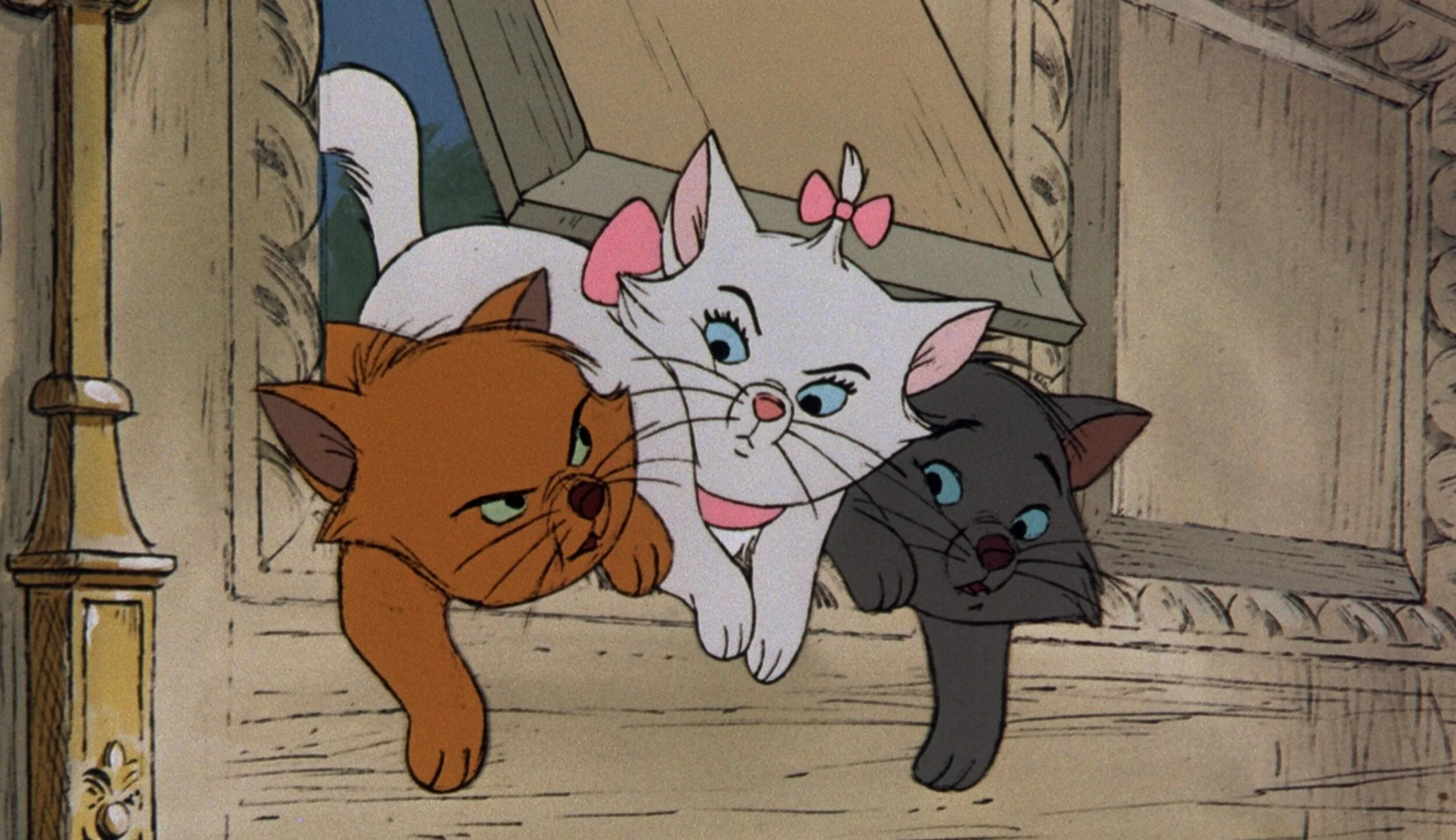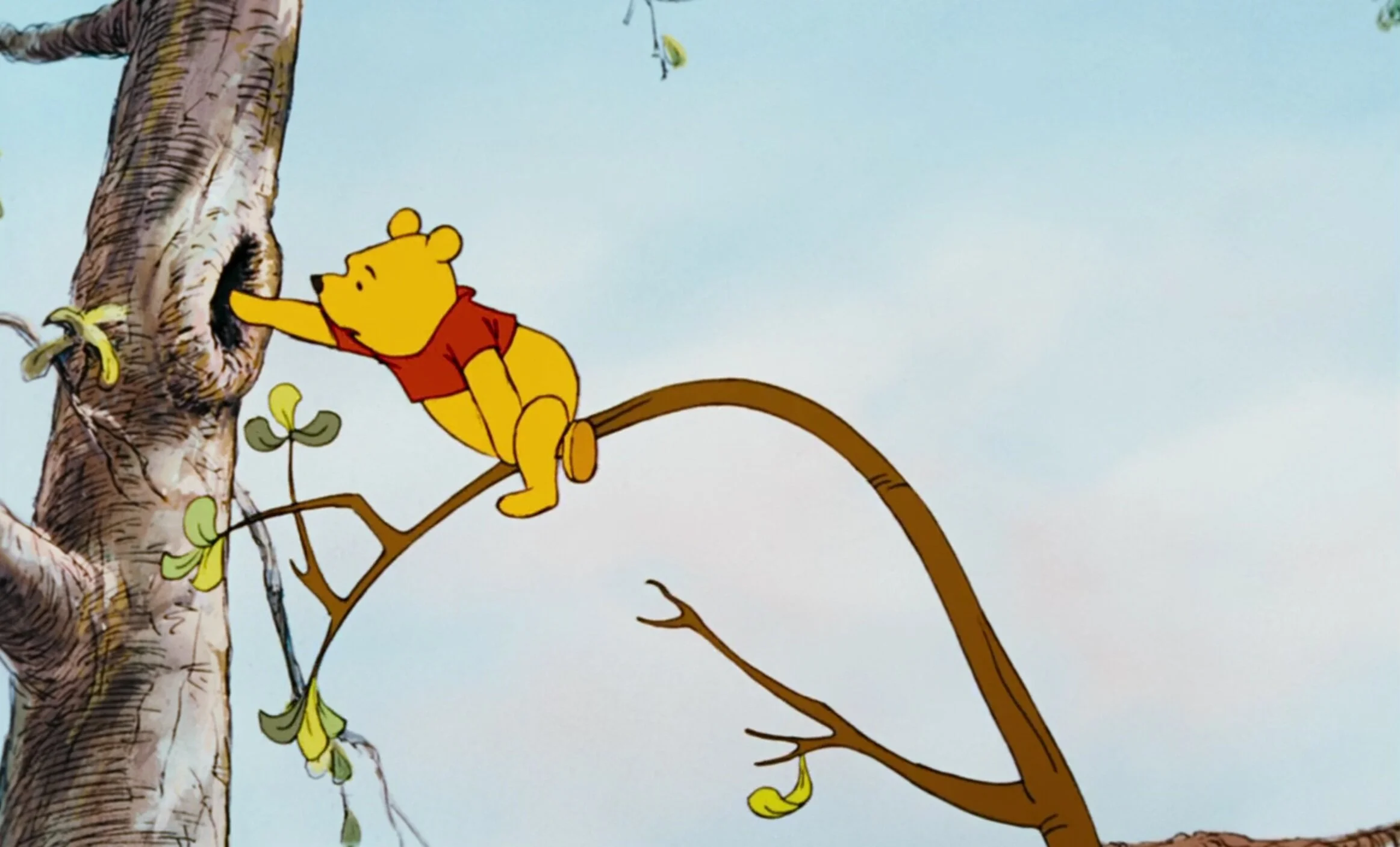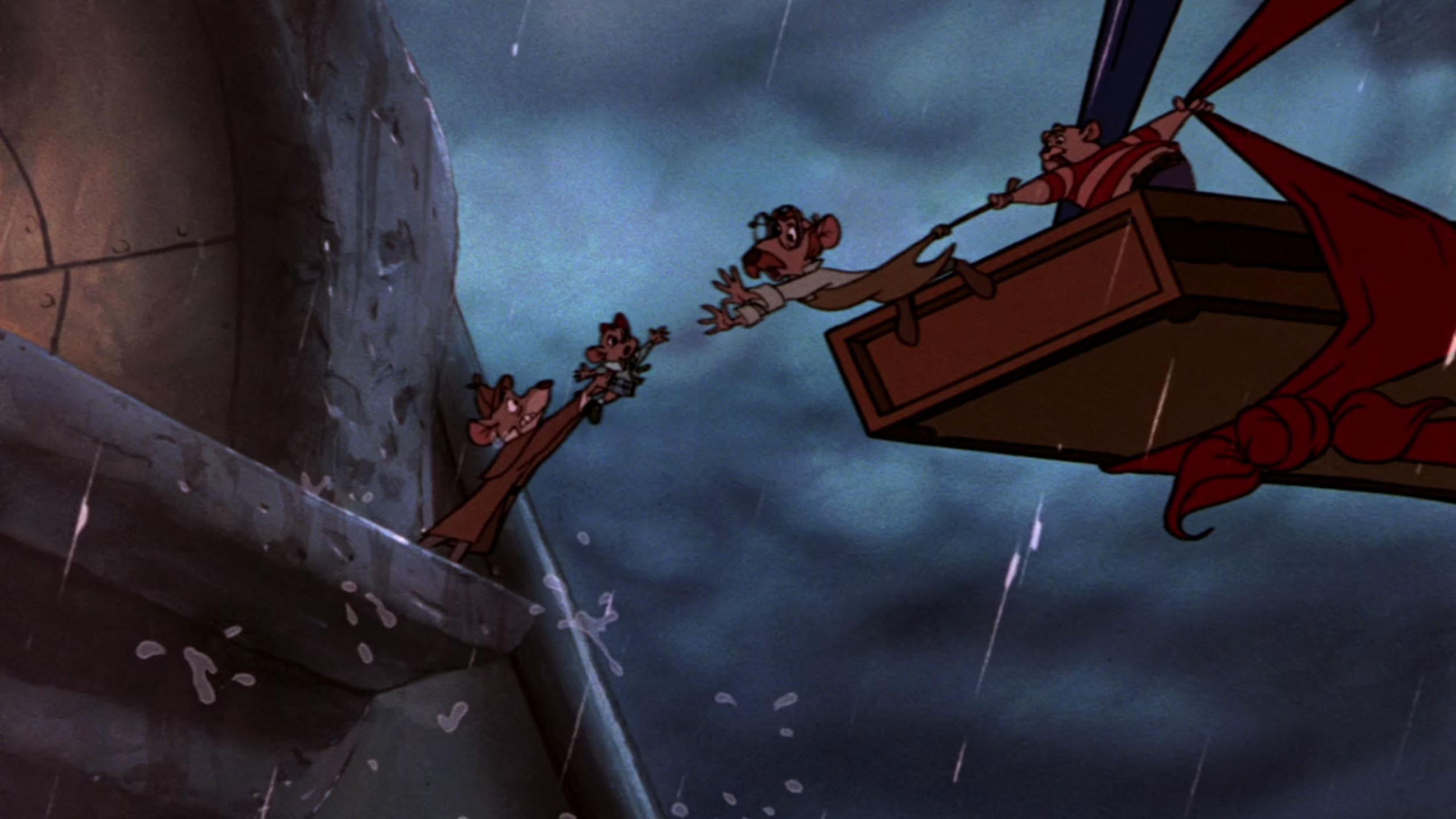Reflections on the Bronze Age: Part One - The Rising Action
Each of the eras so far has had a voice that distinguishes it from the others. The Golden Age is a batch of films bursting with raw creativity, from the joyous mash-up of style and music in Fantasia to the emotional odysseys of Pinocchio and Bambi. The Wartime Era is driven by the chaotic need to get something, anything on the screen, every entry featuring slapdash patches stitched together into quilts that barely qualify as films. The Silver Age features the refinement of the Disney aesthetic into the brand we recognize today, a fairy tale gloss of Joy and Wonder that masks Walt Disney’s attempt (and often success) at turning childlike whimsy into a commodity.
The Bronze Age is unique in that it lacks any coherent through-line. (Unique so far, anyways – the Post-Renaissance Era is somehow even less cohesive and more chaotic.) The films have the same sort of trial-and-error feel as the WWII films, but filtered through the sanitized, streamlined narratives of the Silver Age. The studio mostly does away with its obsession with the classics and fairy tales, taking its only two classics adaptations and recasting them with animals (and making one of them into an extended Billy Joel music video, for some reason). Aside from one out and out strikeout (I’ll get to that in the next article), most of the films are at least solid, but nearly all of them feel rudderless – you can tell they were made by a studio in search of a direction after the death of their (profoundly racist) guide.
This is also a fun era for me personally because, aside from the weird WWII bunch, this phase of the Disney canon contains the fewest number of films that were in my regular watch rotation as a child. Maybe only The Aristocats was a regular watch for me, (The Fox and the Hound and Oliver and Company also got viewings now and then, but nowhere near as many watches as my other favorites), making this an era of mostly fresh watches. And, blessedly, there’s far less racism to grapple with (unsurprisingly, there's a brief moment of it in The Aristocats, the last film Disney touched before his death).
Maybe the most fascinating thing about the Bronze Age is you can sense the studio testing the waters with the various elements that would cohere into their signature style in the 90s. More animal sidekicks pop up here and there, there’s the first real villain song, and the narratives start feeling a little less like fairy tales and more like modern blockbusters.
That’s mostly true of the second half of this reconstruction era, however. The first few films are somewhat of a slow burn, building from a mediocre opening to a pretty strong run in the center.
The Aristocats (1970) - 2.5/5
The Aristocats was a favorite of mine growing up, but it suffers a lot from a watch that puts it up against the other Disney films that do the same things it does, but better. It’s mostly a C-grade riff on One Hundred and One Dalmatians, with an almost identical plot and less interesting versions of every major player, with a dash of half-assed Lady and the Tramp-style romance thrown in at the end. As a bonus, we even get a racist Asian caricature thrown into a musical number, just to make that Lady and the Tramp comparison stick a little harder.
It’s a deeply silly film overrun with sideplots and characters that don’t amount to much more than thin, somewhat amusing diversions. At least 30% of the film’s running time is spent with Edgar, maybe Disney’s most ineffectual villain, as he goes to war with a pair of stray dogs for reasons that aren’t entirely clear--ostensibly he needs to recover his hat and umbrella so no one could tie him to the kidnapping of the cats, but why would his hat and umbrella being left on a farm in the middle of nowhere implicate him at all?
Ultimately when the class war comes, the Aristocats will obviously be put to the guillotine, rendering this entire plot moot.
Thankfully it’s rarely outright bad, just a less effective version of other more interesting, more fun, and more moving films. “Ev’rybody Wants to Be a Cat” is a banger, though, (if you can excuse the racism).
Robin Hood (1973) - 2.5/5
Robin Hood takes the well-trodden elements from a much adapted story and twists them into a new, fresh context: a hangout film with (sexy) furries. The worst thing you can say about it is that it’s insubstantial, which is true of most of the Bronze Age films. It’s never quite as fun as it wants to be, and the characters are mostly thin sketches of things rather than compelling or funny presences.
Though Disney has definitely done worse, this is a very middle of the road effort from the studio. This is the first film where you really start to see the cost-cutting measures the studio was attempting – the animation looks pretty limited, and there isn’t much innovation in the design or execution of any of the setpieces. It probably plays better for kids, who aren’t already aware of the required plot beats any Robin Hood adaptation must hit. As an adult, I found it somewhat boring but vaguely charming, with little to hold my investment in the characters beyond my general affinity for Robin Hood and his Merry Men, my knowledge that the movie was just over an hour long, and my contractual obligation* to finish this project.
*(no one is paying me for this)
The Many Adventures of Winnie the Pooh (1977) - 3/5
The first film of the era that I can confidently call good with my full chest, it’s also the first Disney film that you can fully tell is not attempting to be for everyone. It might just be the way the looseness and whimsy has aged, but The Many Adventures of Winnie the Pooh is a film that is unabashedly for children. That might sound weird to say, given that all Disney films are ostensibly made for children (though you’d have a hard time telling that about some of the later films of this era), but this one holds basically nothing of interest for anyone over the age of 11. As a child I remember falling hard for Pooh, Tigger, Piglet, and Eeyore (even at that age I knew Rabbit could go suck an egg), but on this watch none of them really popped for me beyond little nostalgic twinge of joy at seeing some old friends.
That’s not really meant as a dig, given that I liked this one well enough. Unlike Robin Hood and The Aristocats, this film has an actual aesthetic that wasn’t leeched out of it through the simplification of xeroxing. The Many Adventures of Winnie the Pooh actually feels like the experience of reading a children’s book to a child, complete with childlike logic, very basic characters, and paper-thin narratives. Thankfully, each of the film’s vignettes are charming enough to carry the film through its 75-minute runtime. Any longer and the film might have cracked under its need for a theme, but as is it’s an inoffensive diversion buoyed by cleverly minimalistic animation.
I might have ranked this one a little higher if not for its songs, which are mostly kind of insufferable. Worse, they’re catchy as hell – I had “The Wonderful Thing About Tiggers” stuck in my head for days after I watched this. Most of the songs in this era are pretty forgettable, but Winnie the Pooh easily has the most irritating batch of earworms.
The Rescuers (1977) - 3.5/5
The Rescuers is a throwback to a long-forgotten era where every Disney movie was terrifying beyond belief. I had never seen either this film or its sequel, but it’s hard to imagine the pitch meeting for a series of films based entirely around child endangerment. Everything about this movie is bleak, from the thought that the only people willing to go out of their way to track down this missing orphan are two mice, to the fact that the vast majority of its runtime consists of the main characters attempting to not drown in a shadowy bog.
All that said – this movie is good! The thing that really sets it apart from the first few films in the era is its earnestness. It has a somber tone for much of the runtime. The worldbuilding of the Rescue Aid Society is genuinely compelling, and even if Bernard and Bianca aren’t quite iconic, their characterization is still interesting and idiosyncratic. Madame Medusa is a frightening villain, but she in many ways feels like a Cruella de Vil rehash (apparently Disney considered just making the villain Cruella de Vil, which makes the borderline reskin make a little more sense). This is a buddy cop movie with a big beating heart, and despite some shagginess in the plot and the off-putting nature of its set-up it really won me over.
Gorgeous painted backdrops that are only a few steps shy of the work in Sleeping Beauty help elevate the relatively simple character design and animation. The music is hard to completely defend – it feels like a cross between the lush fairy tale ballads of the Silver Age and a 70s sitcom theme song – but by the end of the film they grew on me. I’d expected this to be a mostly inoffensive entry at best, but I was surprised by how much it worked. I’ll get to this in a later installment, but the sequel’s even better.
Up next: one of Disney’s biggest bombs, back to back with one of their biggest surprises.







